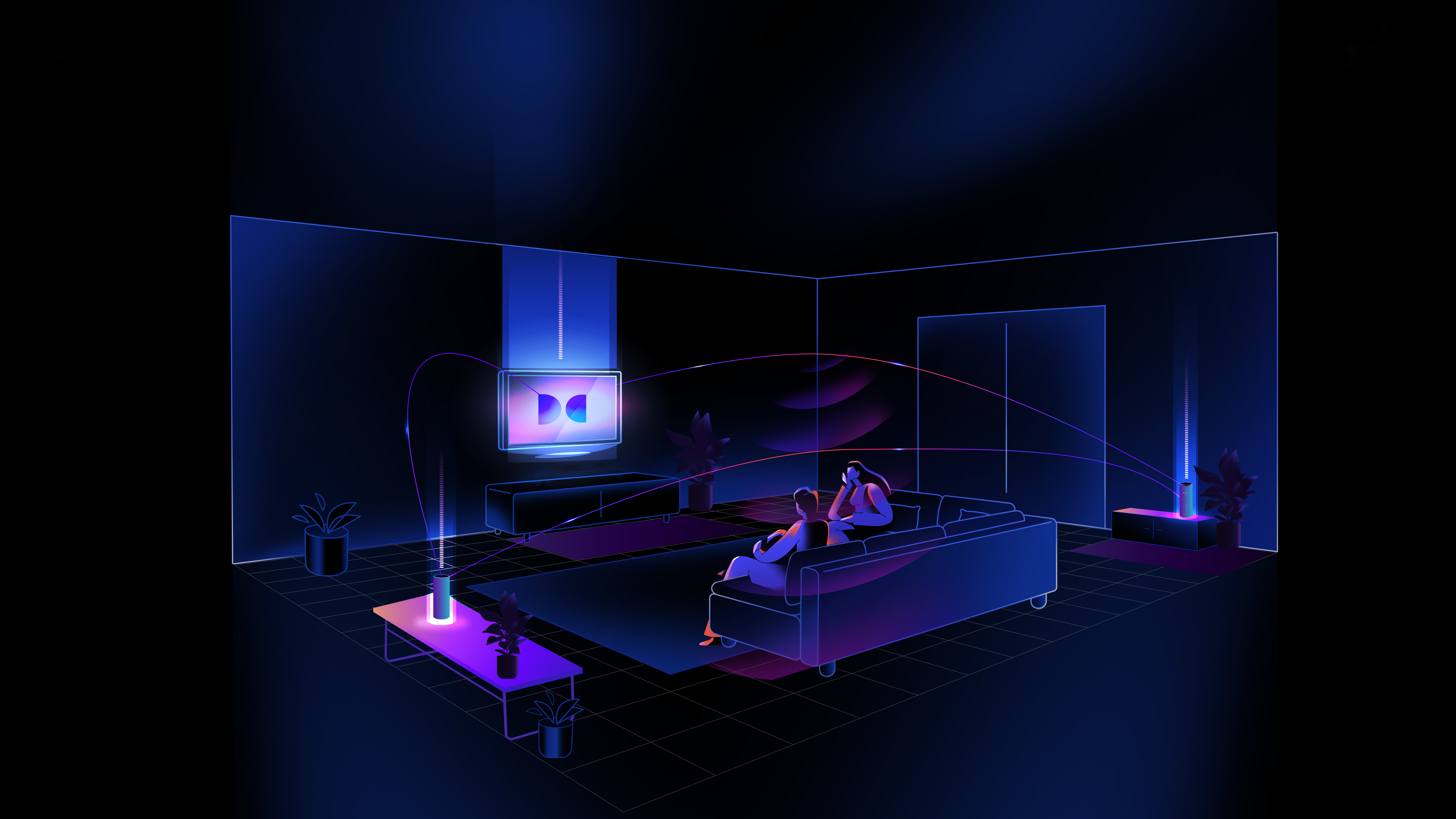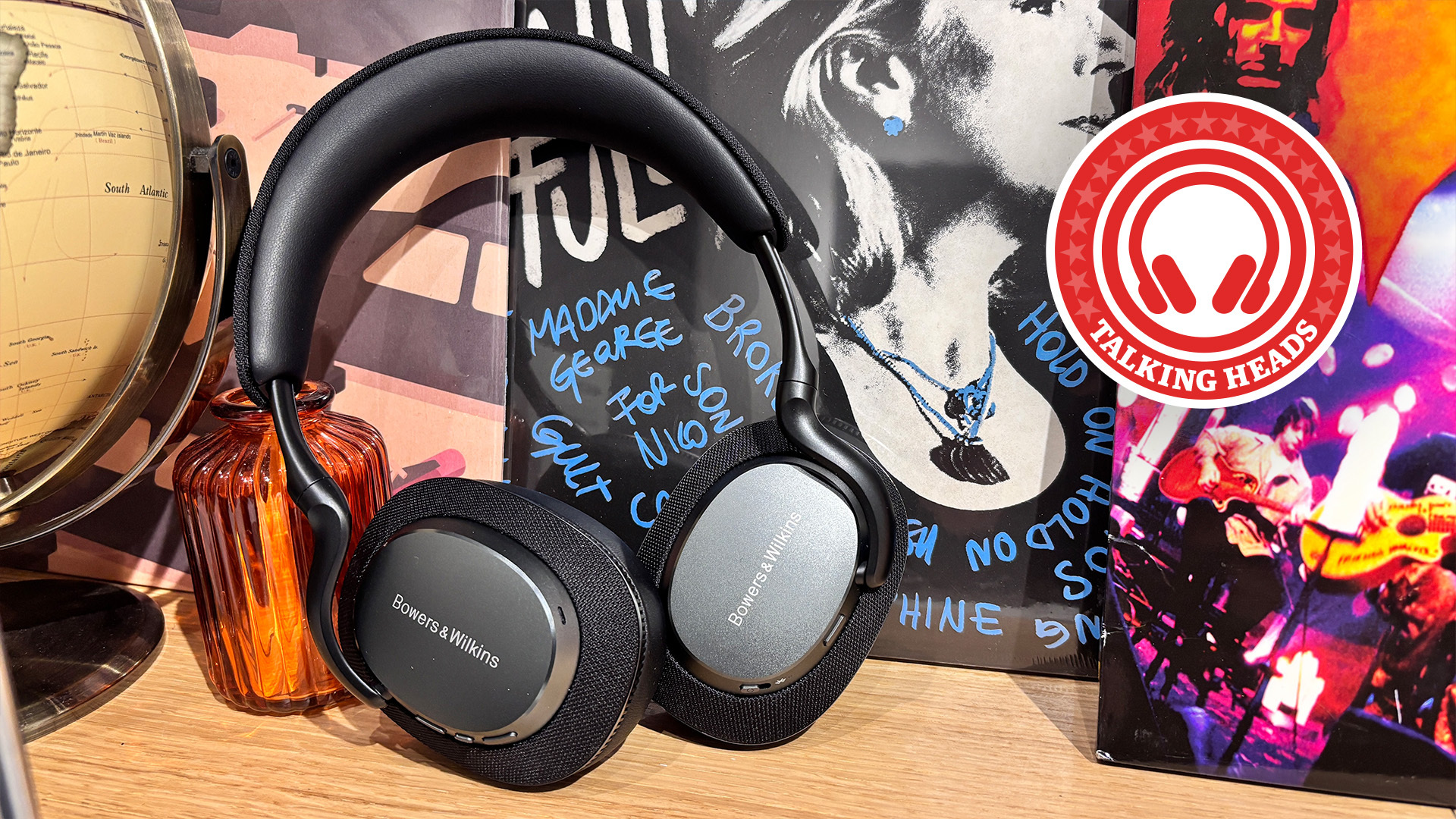Dolby and DTS want to make 2024 the year of wireless Atmos surround sound – we wish them luck
Two key new wireless surround sound technologies are set to debut next year, but will they work?

It's been a great year for home cinema technology. This was headlined by the grudge match between LG’s Micro Lens Array (MLA) and Samsung’s second-generation QD-OLED screen tech which has dominated the headlines over the past 12 months.
And to be clear, we loved watching the fight – observing the differences between great TVs like the MLA-powered LG G3, Panasonic MZ2000, and Philips 908 and QD-OLED packed Sony A95L and Samsung S95C was a personal highlight this year.
But the hoopla has masked an equally important and potentially groundbreaking shift that may take centre stage in 2024 – a move to truly wireless surround sound packages.
This year, both Dolby and DTS unveiled new technologies designed to cut the cable on home cinema audio. Dolby kicked this off in September at the IFA tradeshow in Berlin where it revealed Flexconnect.
To catch up readers who missed the original news, Dolby Flexconnect is a new wireless technology designed to let you create wireless Atmos systems using your TV as the central channel and specialist “satellite” speakers. There are currently no working examples of the tech, but TCL has confirmed it will launch a TV and speaker package using it at an unspecified point next year.
What makes the tech interesting is that it will not, in theory, require specialist placement of the satellites to get accurate results as the hardware will be able to intelligently scan and optimize its settings based on its surroundings – which is a neat idea, especially if it can deliver the “dome” of sound experience seen on proper Atmos systems without needing ceiling speakers, as promised.
Next up, DTS detailed an update to its DTS Play-Fi tech. The descriptively named DTS Play-Fi Immersive Home Theater is a slightly more complex wireless surround sound solution with even loftier aspirations than Flexconnect.
Get the What Hi-Fi? Newsletter
The latest hi-fi, home cinema and tech news, reviews, buying advice and deals, direct to your inbox.
It aims to offer a company-agnostic platform that will let you connect compatible devices from different manufacturers.
The tech supports 12 audio channels in system configurations up to 7.2.4 (that's seven main surround channels, two subwoofers, and four height channels). Interestingly there’s also pass-through support for Dolby Atmos, DTS:X and IMAX Enhanced technologies. So if it works this could be a wonderfully easy way to create surround-sound packages using whatever compatible hardware you have around.
Sound good? I certainly get the appeal from an ease-of-use perspective.

Wireless audio is, of course, a mainstay in most homes, with people favouring the convenience and ease of use that things like the Apple HomePod 2 and Sonos Era 300 wi-fi speakers – which are about as plug-and-play as you can get – offer.
Personally, I'd love to get a proper Dolby Atmos satellite speaker system working in my living room – which I’m currently banned from doing as my partner doesn’t want speakers drilled into the ceiling and cables running across the ground. Fair enough.
This is why I wish both Dolby and DTS luck creating effective wireless surround sound systems. But I will also caveat that both will need it, as the biggest hurdle they’ll have to overcome is a biggie – audio quality.
FlexConnect’s claims around unfussy speaker placement could ring true for sure – we saw a similar solution when we reviewed the Sony HT-A9, which delivers reliable non-Atmos surround sound performance. But I have serious doubts about the use of a TV’s inbuilt speakers for a central channel, not to mention the ability to replicate the “coming from above” dome of sound experience you get with a full-fat Atmos speaker package.
Jump over to our best TV guide and you’ll see that 99 per cent of the time we recommend you always buy a soundbar or speaker package with your new set. This is because the physical constraints of current flat-screen TV designs make it close to impossible to deliver truly immersive sound. Even TVs that try using clever new hardware to get around this problem struggle in our experience. Two great examples are the Sony A95L and Panasonic MZ2000.
The A95L uses clever proprietary hardware that vibrates the TV’s screen to create sound and give the audio a more accurate, directional quality. The MZ2000 has a giant “Playbar” speaker system, which effectively bolts a Technics-tuned sound bar to the bottom of the set.
Do they make the TVs better than most rivals when it comes to audio quality? Based on our testing, yes. But, they still don’t offer anywhere near as powerful and immersive an experience as what you’d get on an even moderately priced soundbar, let alone a class leader like the Sonos Arc or Sony HT-A7000 despite the clever hardware.
The weak central channel offered by a TV was also a key issue we had when we reviewed the Sony HT-A9 and a reason I can’t see it being fixed on Flexconnect.
DTS Play-Fi also has its own set of issues. Specifically, that it aims to let you use “any” compatible speaker. Any hi-fi or home cinema fan will know about the importance of “matching” hardware. Speakers all sound different, and if you don’t pair them with complementary hardware they will sound bad when working together. That’s a simple fact and the reason Apple doesn’t even let two different types of HomePod work in stereo, even though AirPlay could theoretically let them. So letting people create Frankenstein setups seems like a cool, fun, idea that will undoubtedly lead to some horrific-sounding setups.
Hopefully, I’m wrong and the solutions will find a way to overcome these challenges. Either way, I’ll be keeping a close eye on both next year and waiting with bated breath for the first products using them to appear.
MORE:
These are the best wireless speakers we’ve tested
Check out our picks of the best Dolby Atmos soundbars
We detail the best home cinema packages currently available

Alastair is What Hi-Fi?’s editor in chief. He has well over a decade’s experience as a journalist working in both B2C and B2B press. During this time he’s covered everything from the launch of the first Amazon Echo to government cyber security policy. Prior to joining What Hi-Fi? he served as Trusted Reviews’ editor-in-chief. Outside of tech, he has a Masters from King’s College London in Ethics and the Philosophy of Religion, is an enthusiastic, but untalented, guitar player and runs a webcomic in his spare time.
-
ultraminiature No mention of WiSA which already enables 11 speakers to work together in a 7.1, 5.1 surround sound system. Maybe WiSA gets an update as some signatories went their own wireless system like Dali, B&W with the Formation range. There are transmitters that work with WiSA and powerlink (B&O connections) that allow 16 WiSA speakers and 16 powerlink speakers to work together.Reply
In WiSA the mix and match does work so rear speakers might be bookshelf speakers to the front floor standing then with sub-woofer and centre channel. Speakers from the same manufacturer often have a common sonic signature to them, maybe using the same test labs and team to tune them. There are more manufacturers using a stereo WiSA solution not making centre or sub-woofer even but allow the speaker to be select in any position.
Some WiSA transmitters seem to be limited to using their own WISA speakers for 7.1 not showing other WiSA speakers to select. -
peetarz Also no mention of Yamaha while using any of their Rx or AxA avrs ?Reply
Musiccast will enable using two Musiccast 20's as rear wireless surround speakers. The only downside would be being limited to a 5.1.2 set up when using wireless.
I have this set up and other than the occasional reboot of the rear speakers I am quite happy with it.
